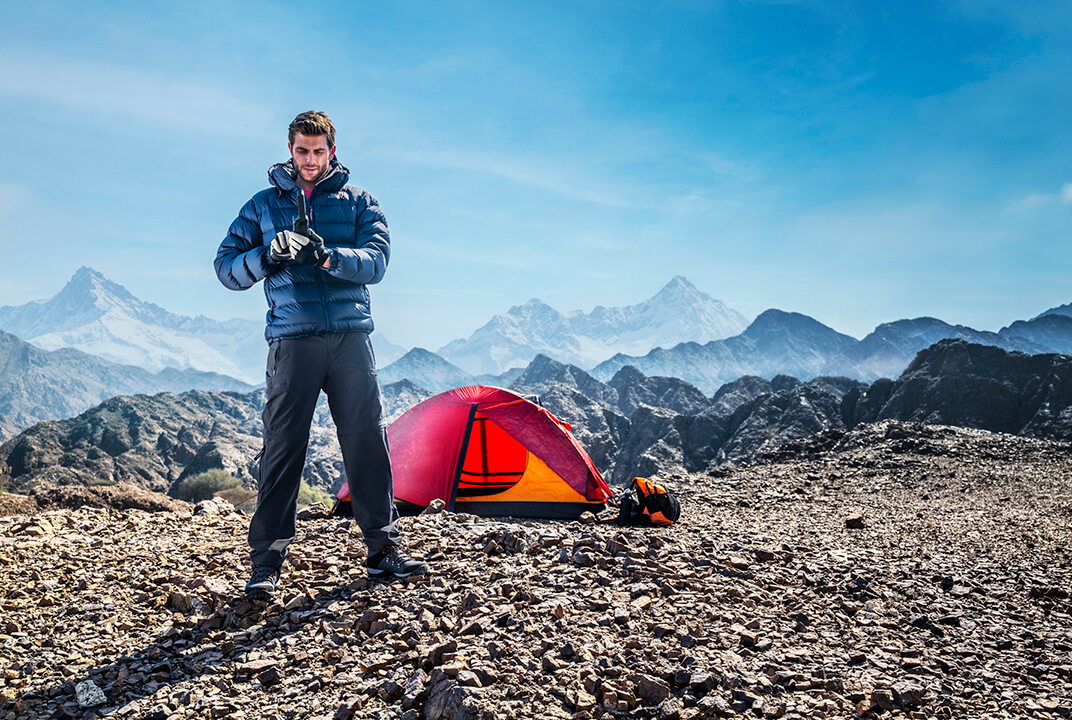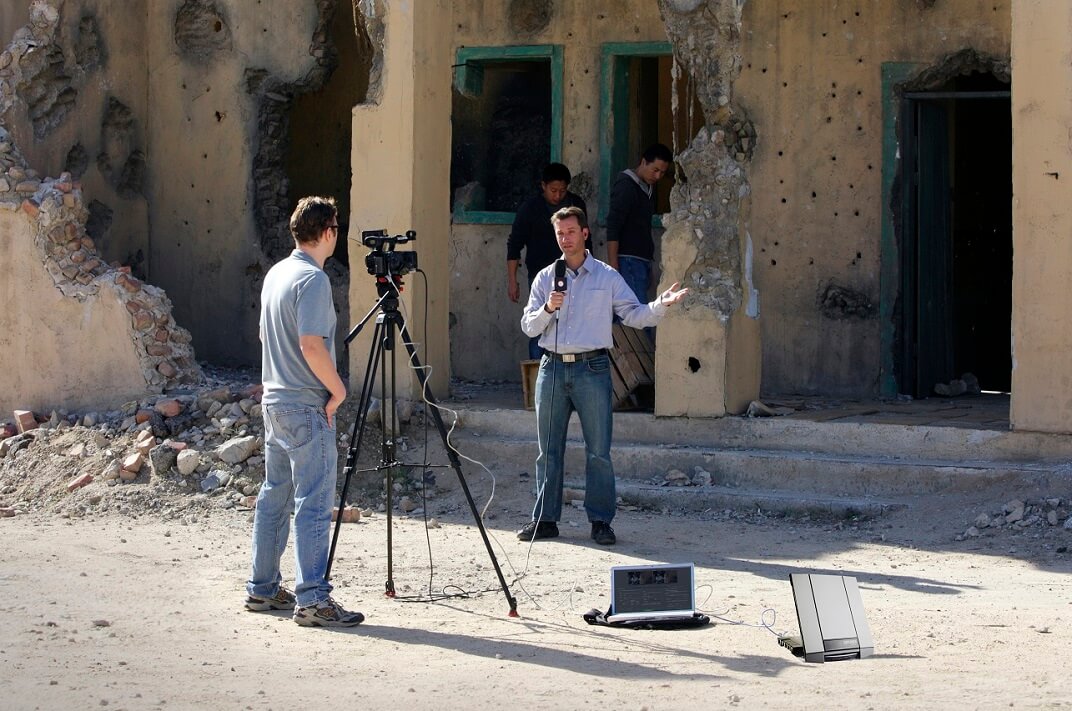Globetrotting TV adventurer relies on BGAN
Adventurer Ed Stafford relies on his skills and wits to survive in some of the most inhospitable places on the planet – but he also knows the vital role satellite communication has to play in staying safe and connected in today’s world.
Ed is currently wrapping up the filming of his latest TV series for the Discovery Channel, First Man Out, which sees him pitted against other survival experts in challenges set in the toughest locations imaginable. The series, his fourth for the channel, includes episodes filmed in The Gobi Desert, Kazakhstan, the Himalayas, and the Golden Triangle of India with opponents including Aldo Kane, the former Royal Marine who was part of an Inmarsat-sponsored record-breaking transatlantic rowing team.
As a film-maker, author, motivational speaker and social media commentator, Ed needs to be able to stay in touch when he is on location, so his essential kit includes a lightweight, portable BGAN Cobham Explorer 510 terminal.
World record
Ed first came across BGAN when he was working with the United Nations assisting Afghans with their first democratic elections, and, impressed by its capabilities, he used the mobile satellite broadband service during his two and a half year trek along the entire length of the Amazon, which set a Guinness World Record in 2010 and put him firmly in the public eye.
“In the Amazon BGAN allowed me to broadcast my expedition live and I was even able to do live interviews with CNN for 10 days in a row at the end of the journey using the streaming function,” he said.
Ed is still an active BGAN user, and while he cannot take the terminal into actual survival challenges while he is filming his current series, it becomes a crucial tool for communicating when he is in remote locations.
Explorer wife
“Now while I am away filming it enables me to continue to run a number of businesses. My phone and laptop work as normal and I can update social media and keep in touch with family too. The locations for First Man Out are all so remote this would be impossible to do so otherwise and I’m away so much of the year that I can’t afford to be off line that much.”
Being able to keep in touch with his family – wife and fellow explorer Laura Bingham, who was recently one of the first all-female team to paddle all 630 miles (1,041km) of the Essequibo River in South America, and their one-year-old son – is also hugely important.
“My wife and I WhatsApp mostly and it’s far more relaxed and informal than the frustrating old satellite phone conversations of yesteryear,” Ed said.
While Laura was taking on the Essequibo, it was Ed’s turn to be the anxious partner waiting for her to get in contact through Inmarsat’s satellite communications technology.
“It’s never the best being the one at home but I’m just grateful that my wife gets it,” he said. “There’s always a risk of resentment if one partner repeatedly goes away but when you take turns that risk vanishes. It’s unconventional but it’s working well – thanks to Inmarsat!”

